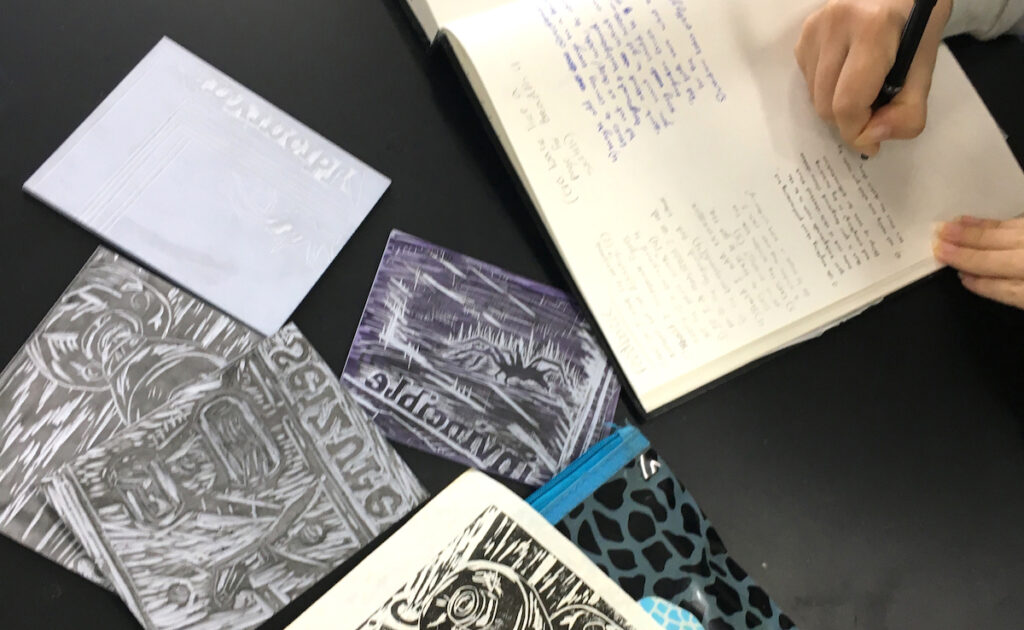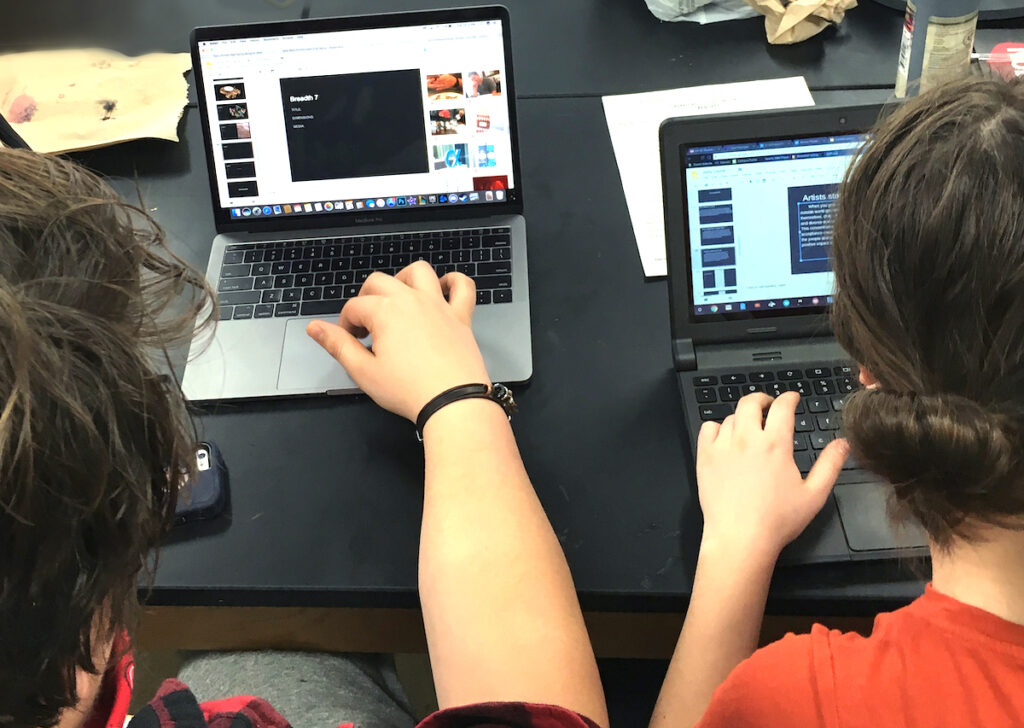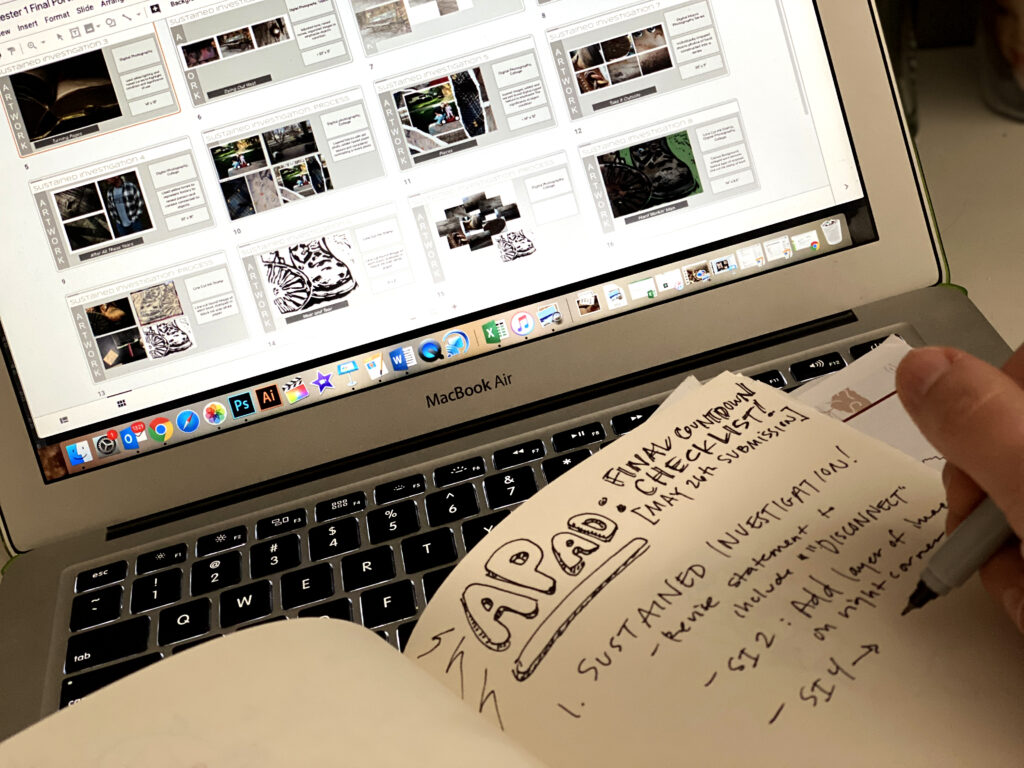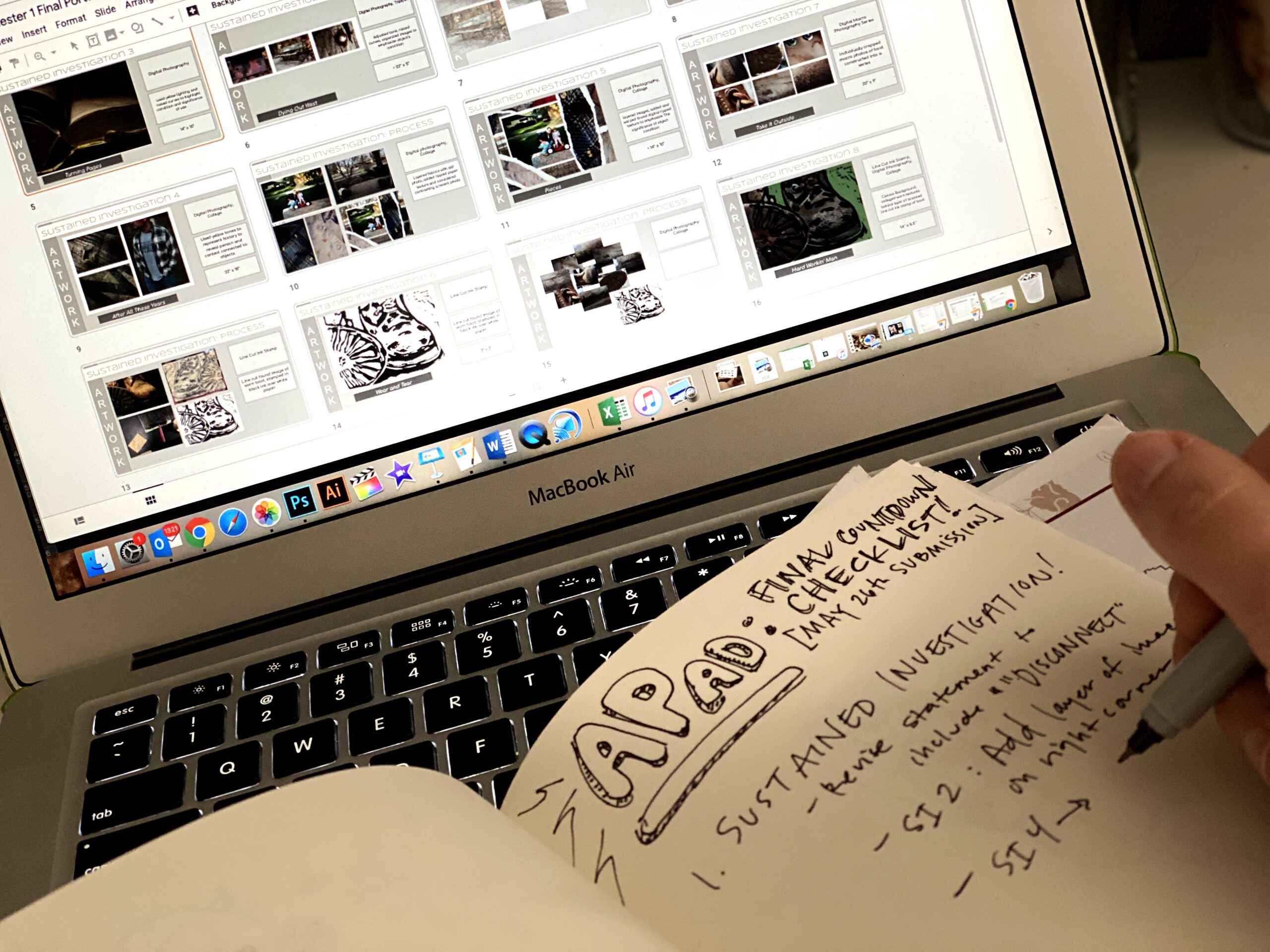Refer to College Board for the latest requirements on AP Art and Design Portfolios as submission details continue to change throughout the pandemic.
Art Education and the Coronavirus (COVID-19)
This year’s adjustments to the portfolio exam have thrown a lot of teachers for a loop. While some teachers were upset about the changes, and others were thrilled, one thing many can agree upon is how fast the rollout occurred. Teachers had to adjust at a fast pace. Now, with many school closures, things are changing rapidly once again. It’s one thing to modify your curriculum for eLearning, but what happens when you have to keep preparing your students for the AP Art and Design portfolio submission as well? Let’s take a look at ways to support our students in a larger scope.
The Portfolio:
In the past: Breadth, Concentration, and Quality

The previous exam was divided into three sections: Breadth, Concentration, and Quality. Historically, most teachers were able to prepare students with practice throughout the breadth portion of the exam, followed by loosening the reins as students pursued interests to develop a series of works for their concentration. Lastly, students chose their best works to submit for their quality portion of the portfolio.
Pre-Closure Guidelines: Sustained Investigation and Selected Works
The sustained investigation is an inquiry-based body of work that digs deeper into the meaning by considering how experimentation of the process and synthesis of media play a significant role in the development of these works. This portion requires fifteen total images (instead of a set number of fully developed artworks) demonstrating this process, including revision. This has been a huge challenge for teachers and students to comprehend.
When we are used to providing very clear structure and deadlines for completion, it’s hard to figure out how many artworks to create, especially when it depends on the individual student. In this new structure, students can complete fifteen individual finished works that demonstrate all of the above, or one significant work (such as a mural or large installation) with lots of process and revision shots along the way.
The inquiry statement is similar to the old “concentration” in that there is a 1500 character maximum. The difference now includes short text options for each image to help describe the process and intentional decision making.
The selected works portion of the exam feels pretty similar to the previous “quality” section, except each work includes text descriptors to give insight into the creation and meaning of each work. Drawing and 2-D Design students would also pack up their physical works to ship off to be scored. 3-D Design works would be submitted digitally, as was the case in prior years.
Revised Guidelines:
What to do now that many schools have closed, and The College Board has changed the guidelines again? The new requirements are that students digitally submit ten sustained investigation images and three selected works. How can we teach with this new framework given the different time schedules and setups to support students’ needs? There is no right or wrong way to support your artists through this new process. Each of us has a unique population, and we need to work through this the best we can. Tips, tricks, and outlined schedules can be discussed again this summer or fall after we see how these new portfolios are scored.
For now, we have to evaluate a few things:
1. Where were your students in their process when you left school?
You may have students who are behind while others might be totally on top of it. You will have to assess each student. In my classroom, many of my students started developing sustained investigation in October. By this time most of my students had eight completed artworks with about three to four process slides.
Now that we are not in the classroom, it is essential to support students wherever they are in the process. Ask students to create a slide portfolio using Google Slides or another platform. The slides should reflect the same expectations as the AP guidelines. Ask them to include an inquiry question, a place for materials used, process and dimension. Think of this as the record-keeping for all your students. It is a great way to check progress and help students understand the flow of their portfolios. Use the same character limits for any reflection The College Board requires. It is also good practice to also require titles. Keep in mind, the more process pictures provided, the better the choices are for the final submission.
2. What technology and access to materials do my students have now that they are home?
My school is a one-to-one school where each student is issued a Chromebook by our district. We are lucky. Not all students have internet access, however, and most do not have Photoshop on their home computers. This will be a huge obstacle if your students have limited access to technoogy. On the AP website, you can request technology access for your students (by April 27th) if they have none.

Two days before our district closed, I asked students to take home materials—even if we were coming back on Monday. I asked my AP students, specifically, to review their portfolio planning for their next and last four works. From there, students listed materials they saw in their work previously, including fasteners and surfaces, then they listed materials they might want to use moving forward.
While your students are probably out of the building already with zero access to the classroom, you can still do this exercise with them at home. After creating their home inventory list, ask them to list anything they don’t have at home but feel they would need. Students are going to have to get even more creative to further their work using materials they can access. Once you know what they have or need, you can troubleshoot how to get around any materials they don’t have and can’t get.
3. How can I individually support each artist to submit?
A good first step is to poll your students to find out what they want to do with the time left and where they want to go with their artwork. If you are like me, you have students who are ahead of the game and way behind—with the majority in the middle.
Ultimately, it is completely up to the student when they submit up until the new deadline of May 26th, 2020. However, creating a checklist with deadlines will help students know what to do and by when. You might find that supporting each student’s needs remotely is much more difficult and time-consuming than in the classroom. The last thing you want is to be scrambling at the finish line juggling all of your students’ last-minute needs. Providing a checklist with goal dates and “drop dead” dates will help students manage time and keep you apprised of their progress.

If your school supports video conferencing, try planning to have two video conferences with each student or small group of students to prepare for submission. Providing a clear list of expectations for what each call will look like will help students prepare for the best use of both of your time. Consider having pre-requisites before the call. For example, require at least ten images in their sustained investigation slides and five in their selected works.
Once a call is scheduled, tell students they must have their slides up to review, their sketchbook out to take notes, and the conversation can be recorded for them to review further later. Personally, I tell students that during this call, I will literally “read” their portfolio and move slides around to help the flow of their work. I will suggest revisions if they need something to help link their works together, and explain how I am reading the connections from their work to their inquiry statement.
Between this first call and the next, encourage students to review the inquiry statements, sizing requirements, and updated text boxes for their imagery. On the second call, finalize any last-minute needs and walk through the submission process together if they need direct support.
Need more tips and tricks for learning remotely? Learn more here!
Needless to say, it’s hard to manage students and provide undivided attention when we are used to jockeying between students in a class period and multi-tasking needs. We will all continue to do the best we can, given our circumstances. You and your students may have to worry about much more than submitting to AP, and that is the big picture we must be mindful of. It is essential to remember that you and your students are more than a score, and we are all here to do the best we can with what we have.
For the most up-to-date changes to any of the AP College Board exams, please visit their site directly.
What challenges or obstacles are you encountering with your AP class during the shutdown?
What are some ways you are able to support your students via eLearning?
Magazine articles and podcasts are opinions of professional education contributors and do not necessarily represent the position of the Art of Education University (AOEU) or its academic offerings. Contributors use terms in the way they are most often talked about in the scope of their educational experiences.





